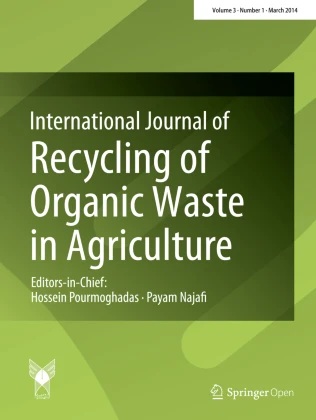
Received: 2016-01-16
Accepted: 2016-07-18
Published in Issue 2016-07-25

This work is licensed under a Creative Commons Attribution 4.0 International License.
How to Cite
HTML views: 3
PDF views: 0
Abstract
PurposeIn waters and wastes, direct pathogen detection is difficult and time consuming. Therefore, coliforms are used as indicators to measure the presence of pathogens. Composts originated from extrements, sewage sludges and plant wastes those contact with manures may have potential health hazard to human. Therefore, the detection of coliforms both during composting and in the obtained composts is used to investigate the presence of pathogens for determination of the potential health risk.
MethodsIn this study, the effect of six different aeration rates on elimination of total and faecal coliform bacteria was investigated during in-vessel aerobic composting of vegetable–fruit wastes. Total coliform and faecal coliform numbers in the samples were measured by the most probable number method.
ResultsColiforms significantly increased before the thermophilic stage except the faecal coliforms in the reactor which operated with the lowest aeration. The coliforms suddenly decreased after thermophilic stage in all reactors. Total coliforms reduced within the range of 78.2–99.9 % while faecal coliforms reduced within the range of 72.5–99.9 % after the thermophilic stage. At the end of the composting period (day 18), total coliforms and faecal coliforms reduced within the range of 99.9–100 %.
ConclusionsAlthough all the aeration rates used in the present study were effective for the elimination of coliforms, the lowest faecal coliform number was seen in the reactor that had the lowest aeration rate. At the end of the study, the faecal coliform numbers in all reactors confirmed some limits for the application activities of composts.
Keywords
- Total coliform,
- Faecal coliform,
- Aeration,
- Elimination,
- Composting,
- Waste,
- Vegetable–fruit

 10.1007/s40093-016-0134-6
10.1007/s40093-016-0134-6











